Each of these forts has an evocative story to tell, a mood to reflect and breathe the magic of its historic and turbulent past. Not just the relics of a bygone era, they are living testimonies of the glorious culture of the past that has survived across generations.
Text & Photographs: Akul Tripathi
Across the world, Bollywood is known for packing so many genres into one movie. The variety, the ease with which it all mingles astounds everyone. For me, forts are just like that. They are all masala movies with their own star cast, drama, romance, action, intrigue, family feuds and more often than seems evident, comedies of circumstance, and even dark angst.
The stories unravel as you walk its path. The background music palpable as the twists and turns take you to its womb. The light and how it bounces off the various walls and facades tell its mood; and once you are absorbed with these, the trees and stones that have witnessed the many genres that lived and breathed there will implant these tales in you; and the augmented reality it creates, will make you live the many histories it lived.
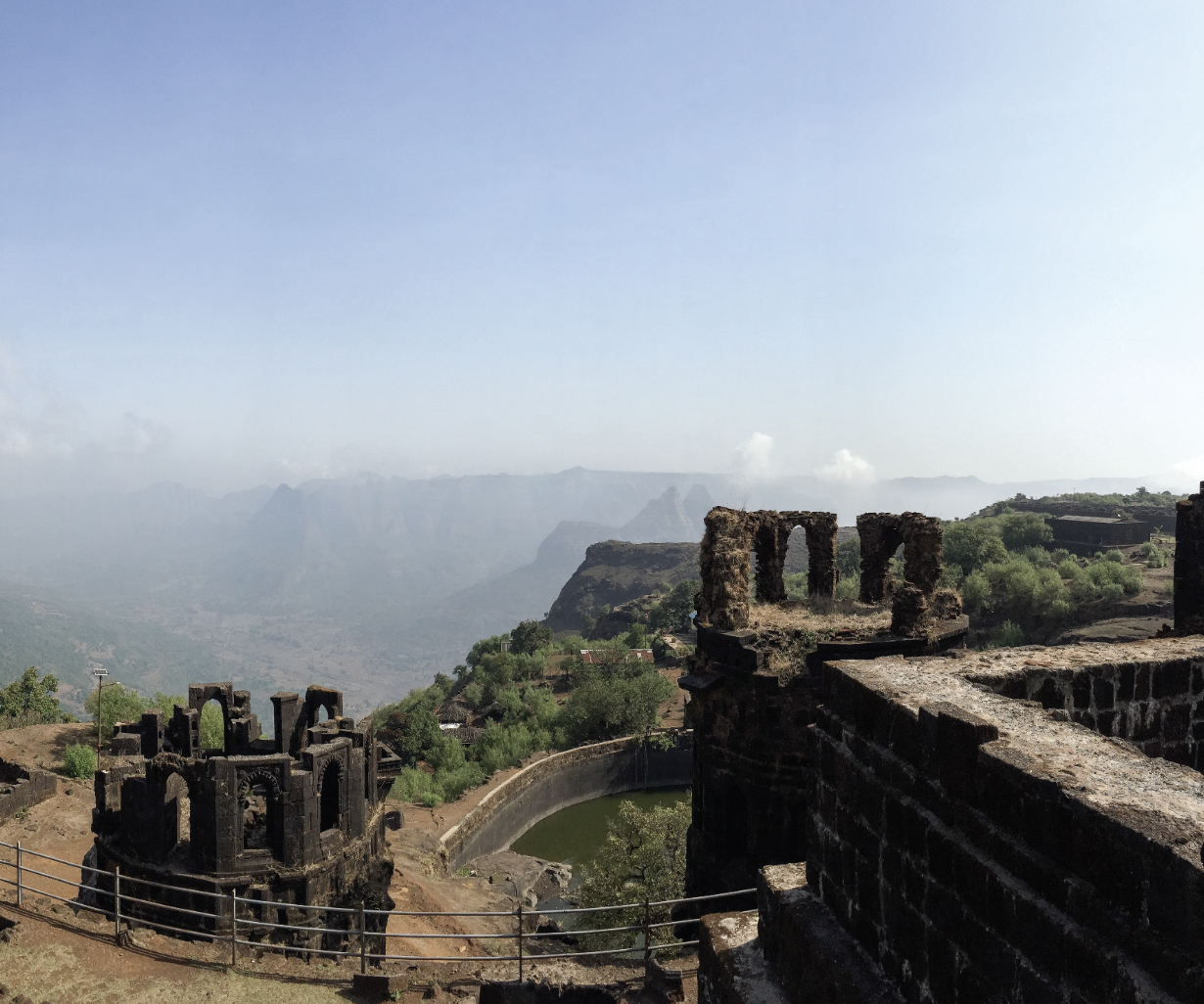
Each moment, an act of magic and relativity. Where a year may take pages to unravel, and yet centuries could pass in a comma. Each story summed up in a sentence where entire books may offer not much but a prelude…
Raigad
The fort of Raigad was and continues to be representative of the Maratha power. The history of Raigad, in every way represents the history of the Marathas.
The fort of Raigad however preceded the coming of the Maratha Empire. It was earlier known as Rairi which means royal hill and was the seat of petty Maratha chiefs. The records establish its existence since about the 11th century. In the 15th century, it was a tributary of the Bahamani Kingdom and in 1479 passed to the Nizamshahi rulers of Ahmednagar and was with them till 1636 when the Mughals conquered Ahmednagar and handed the fort over to the Adilshahi kings of Bijapur.
The Raigad forts have the peculiarity of being built on a rocky outcrop that is removed from the other mountains and connected to them by a thin strip of land while the other three sides have steep cliffs which are inaccessible, making the flat hilltop an ideal location for a fort.
It was the fort in which grew from childhood to adolescent, the fiery heart of the Marathas – their leader in whose name and image an empire would be forged – Chhatrapati Shivaji Maharaj; and whose coronation amid these walls would be the grandest, most talked about event of his generation.

For an official recognition of his status, Shivaji arranged for a coronation befitting his vision and ambitions. The coronation was a grand affair and everyone was invited. Even British officers were present. People had come from far and wide to witness the coronation of their king, the hero of their legends, as evident in this eyewitness account of the coronation at Raigad –
“As Shivaji mounted the throne, small lotuses of gold set with jewels and various other flowers made of gold and silver were showered among the assembled throng. Sixteen married Brahman women performed the auspicious waving of the lamps around the newly enthroned monarch. The Brahmans lifted up their voices, chanting holy verses and blessing the king, who bowed to them in return. The crowd set up deafening shouts of “Victory, victory unto Shivaji Raje!” All the instruments began to play and the musicians began to sing at once. By previous arrangement the artillery of every kingdom fired salvoes of all their guns exactly at the same time. The arch-pontiff Gaga Bhatte advanced to the throne, held the royal sun shade of cloth of gold fringed with pearls over his head and hailed him as Shiva, the paramount sovereign.”
What few people know is that immediately after the coronation, there were a series of unfortunate events. Kashibai, the queen consort, the queen mother Jijabai and the commander-in-chief Pratap Rao died within a short period of time. Priests from a tantric background in Bengal blamed the propitiating of only Vedic Gods for this misfortune. So within a short span of time, another coronation was held as per Bengali tantric rites.
At the time of Shivaji’s death, his eldest son, Sambhaji, who was popular among the courtiers was imprisoned in Panhala by Shivaji himself for irresponsible behaviour. After Shivaji’s death, Sambhaji’s step-mother made plans with various ministers and installed her son, Sambhaji’s half-brother on the throne. Hearing this, Sambhaji plotted his escape from Panhala, killed the commander there, came to Raigad and took possession of the fort. Here, he was crowned Chhatrapati in July 1680 and he ruled for nine years.
Sambhaji’s death had put the Mughals in disarray and his younger half-brother Rajaram ascended the throne and vowed to continue the battle against the Mughals. However, within a few days Raigad fell to the Mughals and Rajaram had to flee to Jinji in Tamil Nadu.
Differences within the Marathas were the cause for the weakening of the Maratha empire, and after the loss at the Third Battle of Panipat, the empire stopped expanding. The British were getting more aggressive in their dealings in India and in 1818, the Marathas lost to the British and became overlords of India. Cannons were used to destroy the Raigad fort and the buildings inside it.
Kumbhalgarh
The birthplace of Maharana Pratap, it is amongst the grandest and most extensive forts in the world with a 36 km long continuous wall that is second only to the Great Wall of China. Kumbhalgarh was Rajasthan’s second most important fort after Chittorgarh and holds the distinction of having been conquered just once in its history!
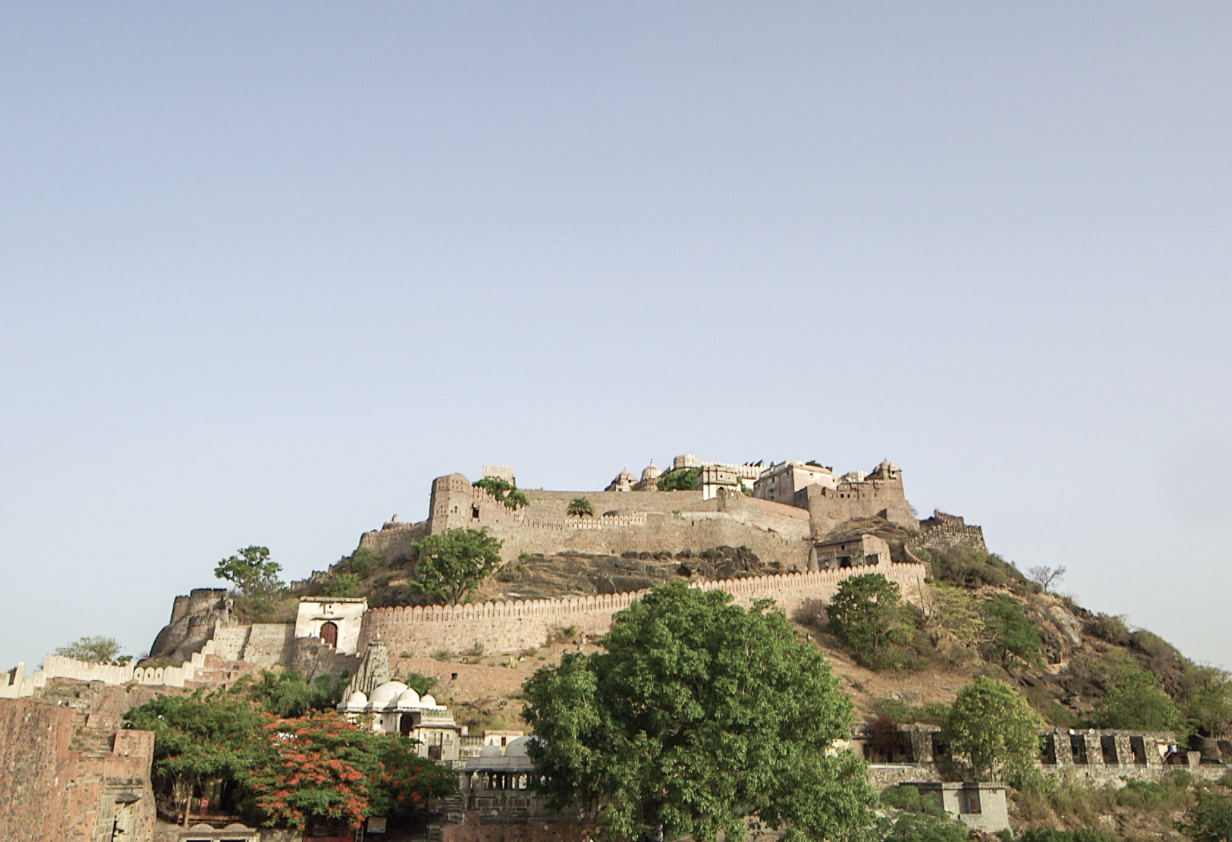
Built by Maharana Rana Kumbha in the 15th century and after who it is named, it was considered unconquerable and is secure in the protection of the Aravali hills. Encircled by 13 elevated mountain peaks, the fort is constructed on the top most ridges around 1,914 meters above sea level. The huge complex of the fort has numerous palaces, temples and gardens and boasts of seven massive gates, seven ramparts folded with one another with designed walls toughened by curved bastions and huge watch towers. It is also known for its famous palace that resides on the top of structure. This beautiful palace is known as ‘Badal Mahal’ or the Palace of Clouds.
Tales abound from the macabre to the incredible. Rana Kumbha, the founder of the fort was murdered by his own son. The kingdom rebelled against the son and he had to flee from Mewar. Soon, he died — struck by lightning! Divine retribution for the patricide he committed? Legend has it that the grand walls of Kumbhalgarh were not being built and some ordained that a human sacrifice was necessary. Finally a travelling fakir volunteered and at the place of his death, there is a temple and where his head fell on decapitation is where the foundation of wall began.
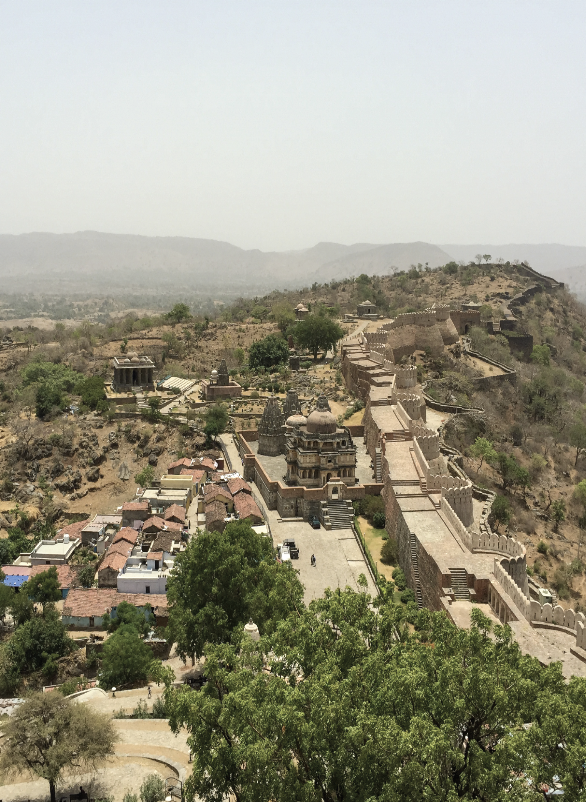
In the times of dissension, the fort also offered refuge to the rulers of Mewar. Even, the baby king Udai Singh was kept here safe during the time of battle. After the death of Maharana Pratap, the Mewar resistance to the Mughals was over as his son Amar Singh accepted a treaty with Jehangir. Mewar became a part of the Mughal Empire and later a princely state under the British. In the late 19thcentury, Rana Fateh Singh once again took the initiative to rebuild this remarkable palace. Parts of the fort walls have never been explored and it is believed that booby traps still exist.
Roha
Built during the 1550s, the fort complex was built in phases and came up over several decades under the various descendants of the rulers of the Rohajagir. The ‘jagirdar’ or ruler of the place Rao Khengarji–I established the town and his brother Sahebji then took over. There were once 52 villages under this fort.
An architectural marvel, the fort complex has a number of jaw-dropping sites and every corner is intricately carved and ornamented. The structure reveals that the palaces of the king and his queens were connected by a long, raised passage which was completely covered in detailed wooden jaali work. The lace-like carved walls allowed those within to have a clear view of the outside but no one from the outside could see in.
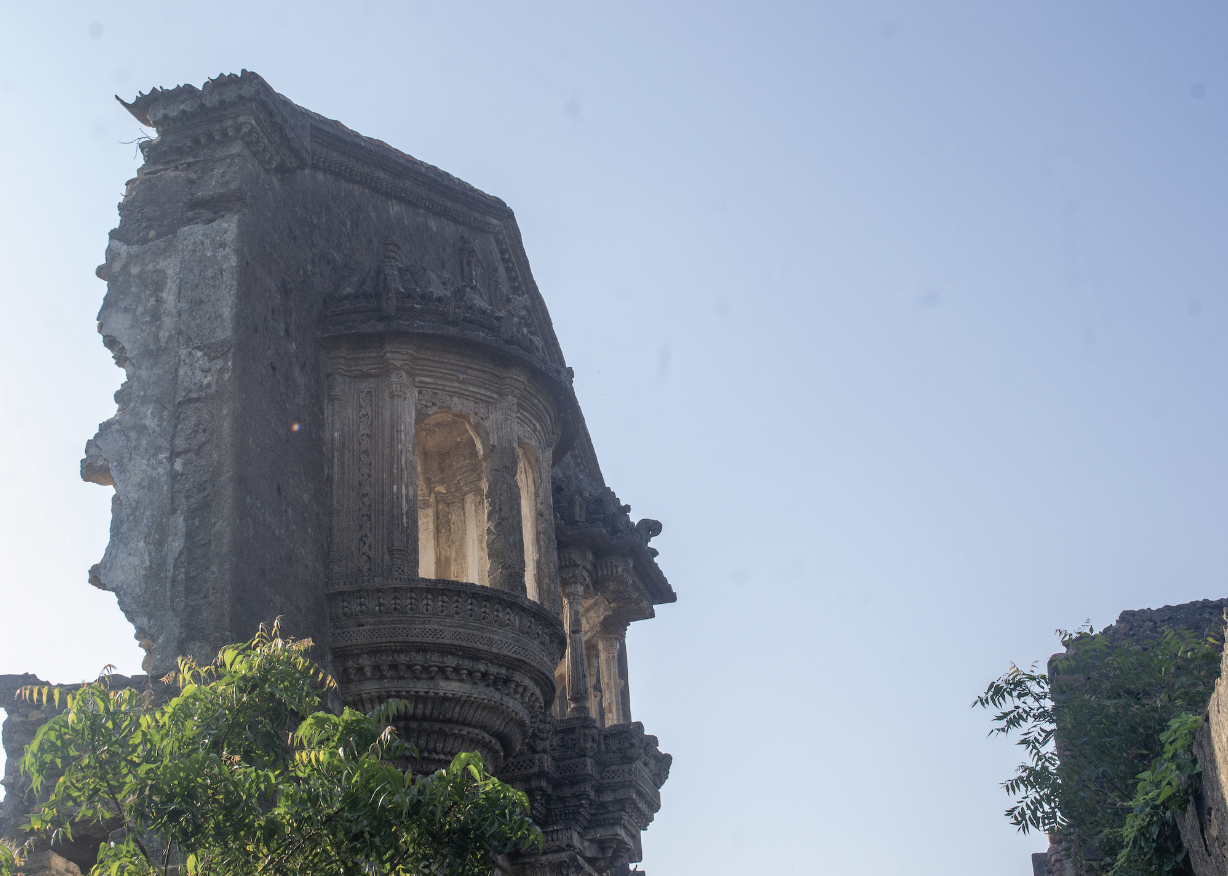
History has it that during those days, Roha was considered to be one of the wealthiest provinces in Gujarat. Even during British raj, Roha was so affluent that the reigning family had the power to maintain their own laws and keep the jail. During the period, several changes were also made to the structure, and renovation was carried out in spurts. It is said that during construction of the fort, two large tanks were built and if the rumours are to be believed, these are filled with gold and silver…and yet to be discovered.
Covering an area of 16 acres, the fort appears like a temple and was mainly built with the use of stone and baked bricks. Over the years, most of the parts of the fort have been destroyed by earthquake and lack of proper management. But one can see a temple at the bottom and another one at the top of a small hill.
Roha is also known as ‘Sumari Roha’ from a popular folklore that 120 Rajput princesses from Sumra in Sindh sought refuge with Abda who was the Jagirdar of Abdasa. When Abda died in the battle with Alauddin Khilji, the princesses sacrificed their lives here to escape Khilji.
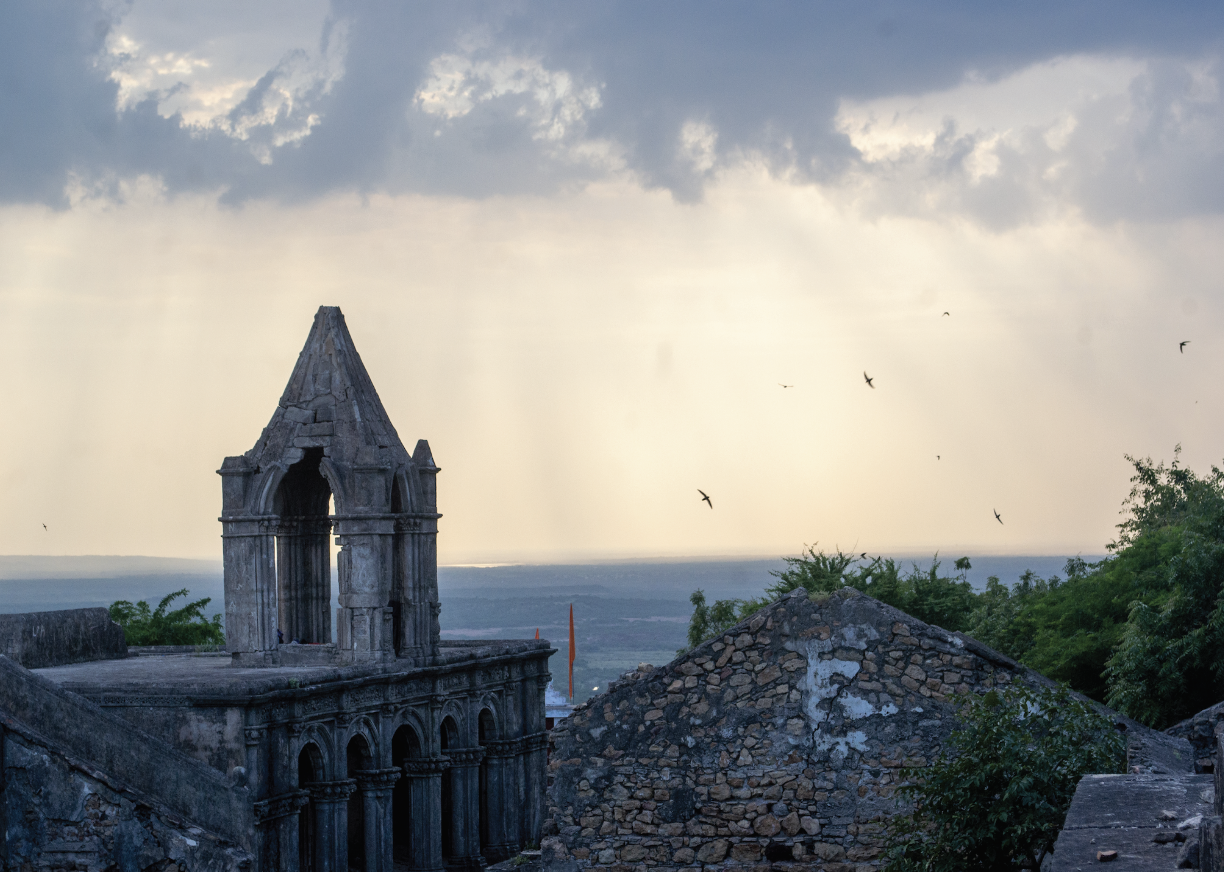
The famous late 19th century prolific Gujarati poet Kalapi is believed to have spent a lot of time on this hill, penning many of his verses on love, nature, and spirituality.
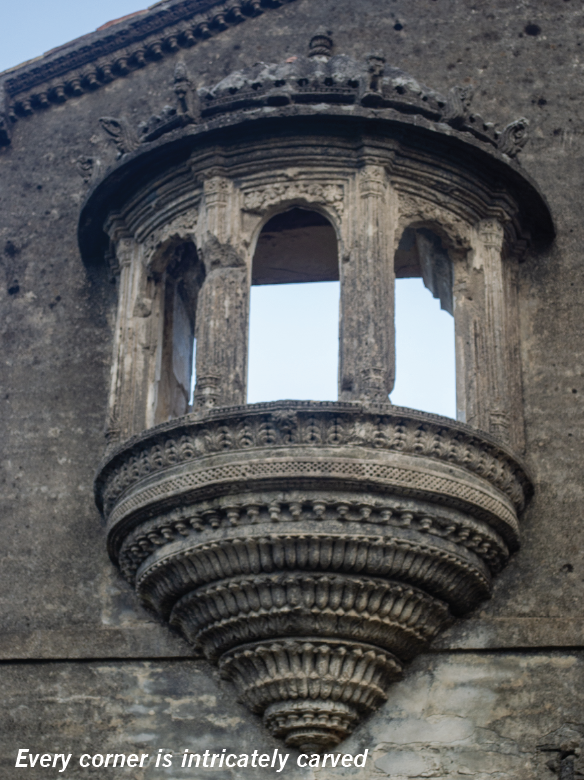
Bathinda
In what was once the frontier regions of Hindustan, a silent sentinel traces its history as far back as when Jesus was walking the streets of Jerusalem. A fort that has been the proud host of great names like Mohammad Ghori, Mahmud Ghazni, Prithviraj Chauhan and where the indomitable Sultan Raziya was imprisoned; the Qila Mubarak of Bathinda, was once the axe that broke the invaders from the north!.
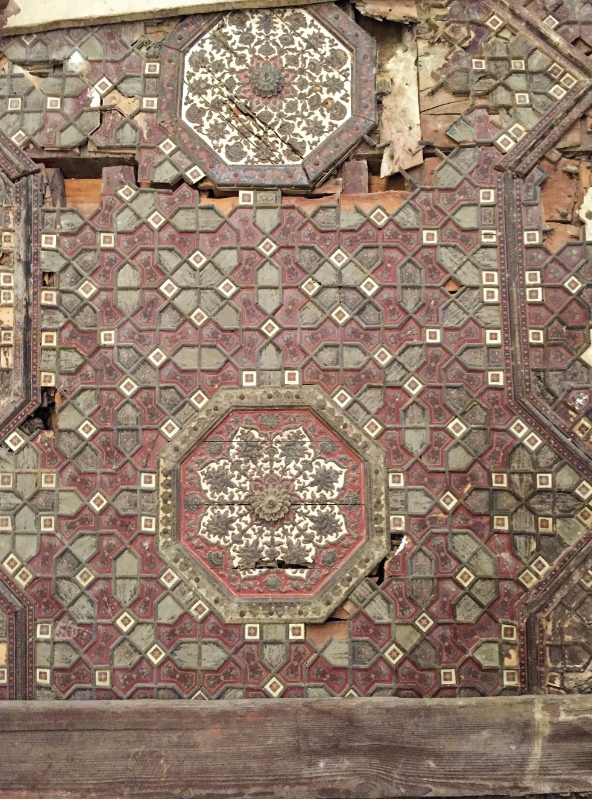
In its early days the fort was probably a structure made of sand and mud. The fort the way it stands today was most likely built by Ala Singh – the king of Patiala and his descendants in the 18th century. Majority of the bricks in the fort date to this era during which time, Nanakshahi bricks which are decorated bricks and more than a fourth size smaller than the bricks in use today.Architecturally, the fort is a formidable structure built on a roughly rectangular plan, each side extending up to 200 metres. The extraordinarily thick curtain wall of the fort soars up to 30 metres, dwarfing everything in its vicinity.

Bathinda was situated along the ancient route which connected Delhi with Multan, the gateway of Hindustan from the northwest. To check the foreign invasions, a line of strongholds to the north of the Ghaggar river was erected during the early centuries of the Christian era. Of all these strongholds, only one at Bathinda could endure the ravages of time.
Once the Mughals won over Hindustan, Bathinda did not remain a frontier province. Babur, the founder of the Muhgal empire came to India with canons,four of which made with an alloy of silver, gold, copper and iron remain here. In 1705 Guru Gobind Singh visited Bathinda and initiated large number of people into Khalsa Panth. It was Bathinda area where Guru Gobind Singh, the tenth Sikh Guru, prepared the full version of the Sikh scriptures called Sri Guru Granth Sahib. Maharaja Karam Singh, in 1835, built a gurudwara – Gurdwara Shri Qila Mubarak Sahib, which still stands in the premises.
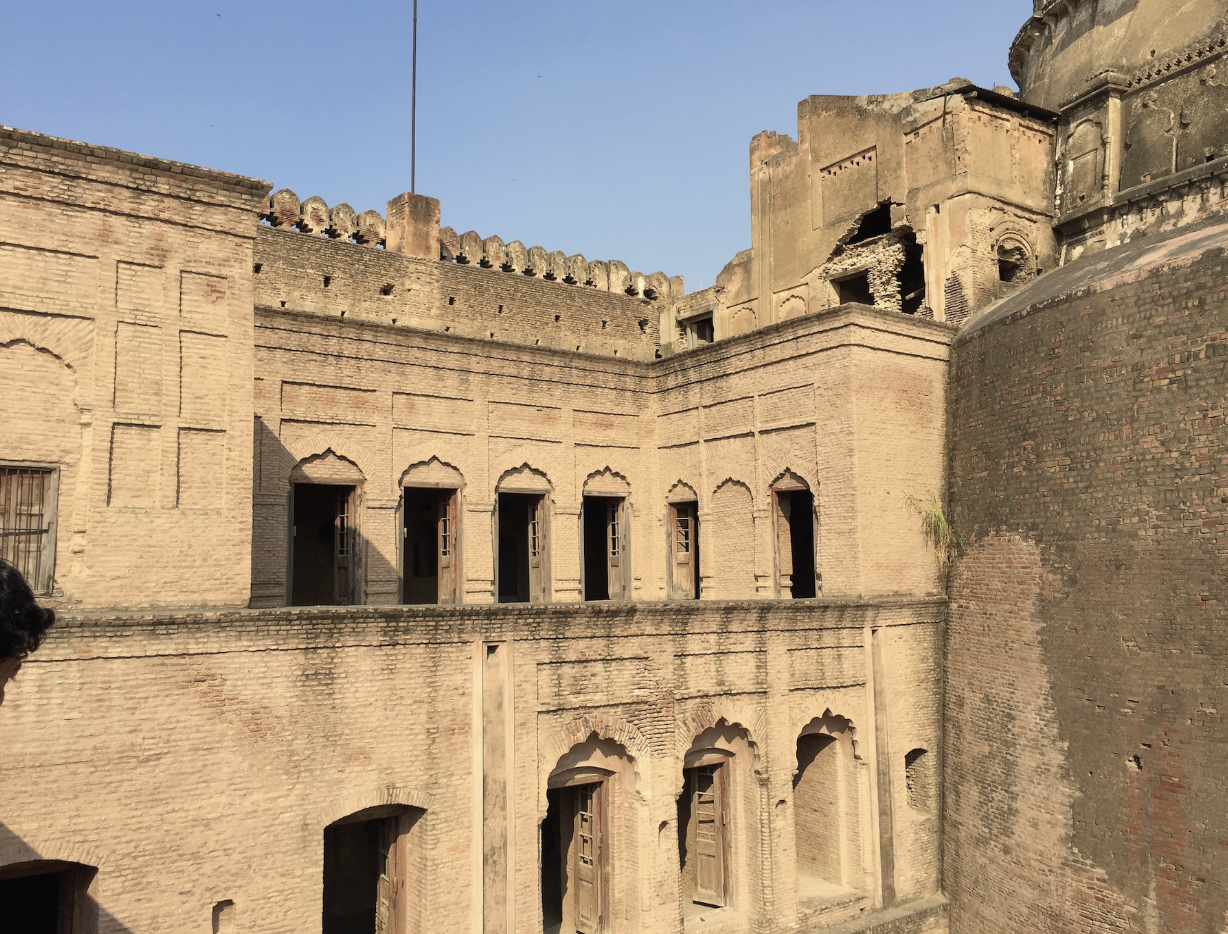
Granth Sahib
To summarise these mega-blockbusters in few words is often injustice, but without reviews, nowadays, who watches movies? So I guess, it is the same with the forts. Remember though, what you read is just a trailer, and every time you visit, they will feel your presence and play their myriad stories – just for you…

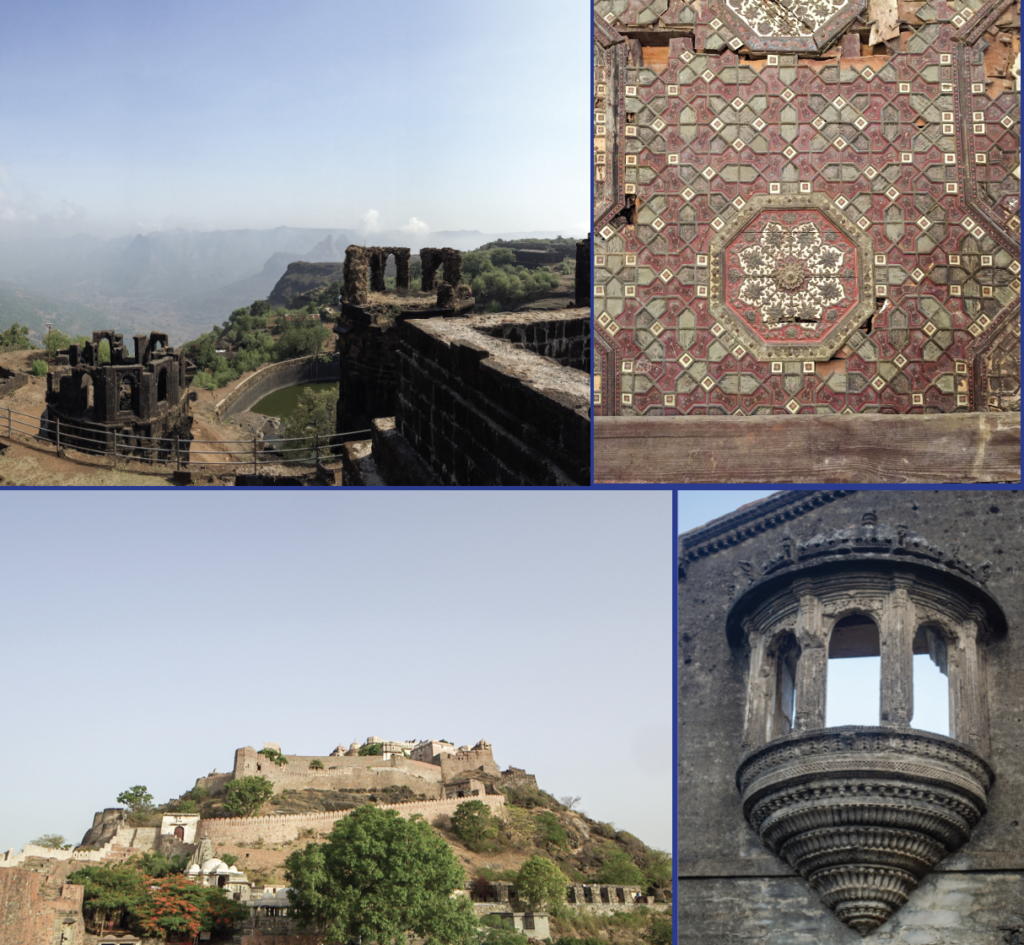
 [/column]
[/column]